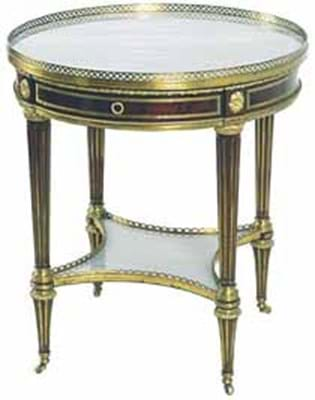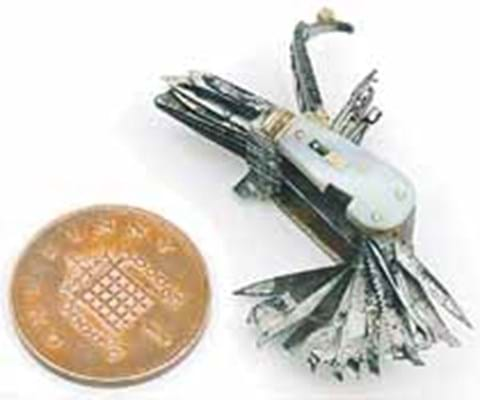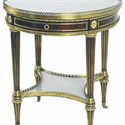"A month before the deadline the sale looked a bit thin," said Bearne's auctioneer Nic Sainty.
In the event, however, the auction on July 6 & 7 was peppered with unusual and quality consignments on top of the profitable modern jewellery and paintings sections which provided the lion's share of the most expensive lots and helped the average lot sell at just short of £1000.
The biggest surprise was a 2ft 51/2in (75cm) high gueridon. It featured gilt-brass mounts, a galleried grey marble circular top, a frieze drawer and elegant tapered fluted legs joined by a grey marble undertier.
As Mr Sainty remained confident that it was correctly catalogued as Louis XVI-style, late 19th/early 20th century, he was at a loss to explain why it sold at more than ten times the £800-1000 estimate.
Although clearly of fabulous quality, the table was not stamped or attributed, but a bidding dual finally ended in the winning £12,000 bid tendered by a London dealer.
Elsewhere, one of the most collectable curiosities was an early 19th century miniature multi-blade penknife with a mother-of-pearl handle.
Stamped Rogers, this was the smallest example of a model produced in varying sizes by the firm to showcase their expertise.
Measuring 3/4in (2cm) long - not much bigger than a penny piece - it comprised no fewer than 38 assorted blades including a saw blade, corkscrew and button-hook.
"From the point of view of penknife collectors it was a must-have," said Mr Sainty. Two such collectors agreed with him and contested it to £3200.
There was predictable interest in an early 19th century pottery slip decorated jug inscribed with the West Country name William Crapp, Port Govern, 1829. There was some pre-sale speculation as to its origins - North Devon was ruled out and Port Caverne on the Cornish coast was suggested as a probability. It sold to a local buyer at £2800.
Similarly, there was no shortage of interest in a broken Hispano Moresque portrait charger decorated in copper lustre with a helmeted soldier's profile. Inscribed 1613, it fetched £1800.
The steady demand for William de Morgan ceramic tiles ensured there were no casualties for a fairly pedestrian nine-lot group from a private source. Foremost were a multiple lot of four tiles dating to c.1880 from Poole's Architectural Pottery Company. Bought as blanks and decorated by de Morgan with manganese blooms and blue scrolling foliage, the tiles realised £2300.
Elsewhere, it was the Polar exploration interest rather than the quality of a silver desk stand which persuaded an Australian buyer to go to £1650 for ownership. Comprising a glass well flanked by lumps of Antarctic basalt, the stand was a gift from Ernest Shackleton to professional toastmaster W. Knightsman for his help in giving after dinner speeches made by the hero of the Antarctic.
Gueridon sets a £12,000 riddle after ‘scramble’ for summer sale
DEVON, with its old wealth and influx of well-heeled retired couples, can provide a rich hinterland, but summer can still mean a bit of a scramble to find enough quality material to offer at Bearne’s (15/10% buyer's preimum) fine quarterly sales at Exeter.








